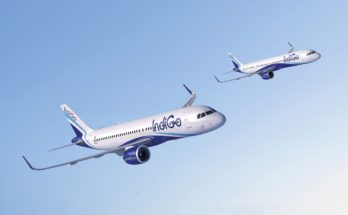
Kawasaki Heavy Industries (KHI) is still working to improve its profitability, which has been flat for the past three years. Much of this decline is due to the effects of the appreciation of the Japanese yen as well as a fall in sales in the company’s aerospace sector and difficulties in the rolling stock segment.
Kawasaki Heavy Industries’ consolidated net sales for fiscal year 2018, ended March 31, 2019, rose 1.3 percent to JPY1,595 billion compared to JPY1,574 billion in 2017. The company posted net income of JPY27.4 billion, compared to JPY28.9 billion in 2017.

The company recently tweaked its financial reporting in regard to aerospace, which enlarged its financial footprint. Previously the sector only included aircraft and helicopter programs. The new change has moved aviation gas turbines from the old Gas Turbine and Machinery unit under the sector’s aegis. The shift provides a much more accurate snapshot of KHI’s aerospace-related financials.
The new Aerospace Systems sector reported sales of JPY476 billion in 2018 compared to JPY475 billion in 2017. Under the old Aerospace organization, sales for 2017 were JPY332 million.
While aerospace growth has been subdued in the years following the boom, the market is nonetheless in stable shape and turning its full attention toward production. To meet this demand, Kawasaki Heavy Industries has added another two factory lines to its operations. These latest lines focus on component production for Boeing’s 777X. Interestingly, one of these assembly lines is located in the USA at a Kawasaki facility in Nebraska, marking the company’s first aerospace operation in the States.
In a related move, Boeing has retained Japan Aircraft Development Corp to build some 21 percent of its latest jet, the 777X. JADC is composed of KHI, Mitsubishi Heavy Industries, Fuji Heavy Industries (now Subaru), ShinMaywa Industries, and NIPPI Corp. The 777X will be the successor to Boeing’s popular 777 aircraft. Two models are currently on offer, the 777-8X and the 777‑9X, with the latter under development. Production began in 2017, and deliveries will follow by 2020.
As it seeks to diversify, KHI is looking to increase its work share on Airbus programs. So far, the company has secured a contract that will see it supply components for the Rolls-Royce Trent XWB engine used to power the new Airbus 350 XWB. In addition, the firm has signed on to develop components for Pratt & Whitney’s PW1100G-JM engine, which will power the Airbus A320neo family of aircraft. Under the auspices of Japanese Aero Engines Corp (JAEC), Kawasaki will manufacture parts of the engine’s fan and low-pressure compressor. With an order book for well over 1,000 aircraft, the A320neo program will be another steady revenue generator for the firm.
In the military aerospace sector, KHI received good news in the form of continued Japanese defense budget hikes. The FY19 defense budget marks the fourth consecutive year in which the topline figure has reached or exceeded JPY5 trillion, and will consume 5.3 percent of total planned state expenditures for the third consecutive year.
The latest budget continues to emphasize airspace and maritime reconnaissance, surveillance and early-warning capabilities, ongoing acquisitions projects from the F-35A (six fighters at a cost of JPY91.6 billion under the current budget markup) to RQ-4B Global Hawk drones (one at a cost of JPY8.1 billion) to E-2D early-warning aircraft (two at a cost of JPY54.4billion), plus the construction of two new 3,900-ton naval destroyers (JPY99.5 billion) and a submarine (JPY71.1 billion), and numerous upgrades and replenishments to existing equipment and missile stocks.
The concurrent development of the P-1 and C-2 aircraft for Japan’s Ministry of Defense remains a key program for KHI. The aircraft will replace Japan’s aging fleet of P-3C and C-1 aircraft. This $2.7 billion effort is Japan’s first large-scale aircraft development program for either the civil or military sector in 30 years. Still, such a high-profile program remains a target. In early 2018, there were grumblings from the Finance Ministry that the cost of the C-2 program is too high and that perhaps cheaper foreign alternatives should be investigated. At this point, however, the JASDF (Japan Air Self-Defense Force) is unlikely to switch from the C-2 to another aircraft.
Kawasaki is promoting the C-2 and P-1 on the export market, and both aircraft have already drawn interest from potential customers. The P-1 was displayed at the Paris Air Show in June 2017, marking the first time that a Japanese military aircraft had taken part in this major international event. A number of countries, including New Zealand and the United Arab Emirates, have expressed interest in the C-2 transport. The C-2’s most direct sales competitor, the Boeing C-17, exited production in 2015. However, the Kawasaki aircraft continues to face competition from the Airbus A400M hybrid strategic/tactical airlifter and, for some contracts, the Lockheed Martin C-130J and Embraer KC-390 tactical transports. In addition, flight testing of an electronic intelligence version of the C-2, dubbed the RC-2, began in early 2018, which may open another market for the aircraft.
A military history enthusiast, Richard began at Forecast International as editor of the World Weapons Weekly newsletter. As the Internet grew in importance as a research tool, he helped design the company's Forecast Intelligence Center and currently coordinates the EMarket Alert newsletters for clients. Richard also manages social media efforts, including two new blogs: Defense & Security Monitor, covering defense systems and international issues, and Flight Plan, which focuses on commercial aviation and space systems. For over 30 years, Richard has authored the Defense & Aerospace Companies, Volume I (North America) and Volume II (International) services. The two books provide detailed data on major aerospace and defense contractors. He also edits the International Contractors service, a database that tracks all the contractors involved in the programs covered in the FI library. More recently he was appointed Manager, Information Services Group (ISG), a new unit that encompasses developing outbound content for both Forecast International and Military Periscope.



